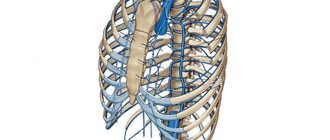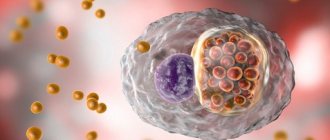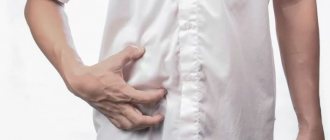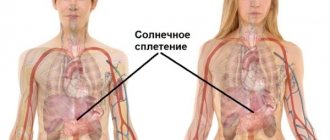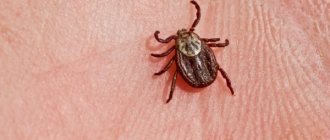Studying the structure of the human body is a difficult but interesting activity, because studying your own body helps you to know yourself, others and understand them.
A person cannot help but breathe. After a few seconds, his breathing repeats, then after a few more, again, again, and so on for the rest of his life. The respiratory organs are important for human life. Everyone needs to know where the bronchi and lungs are located in order to understand their feelings during the period of illness of the respiratory system.
Lungs: anatomical features
The structure of the lungs is quite simple; for each person they are approximately the same normally, only the size and shape may differ. If a person has an elongated chest, the lungs will also be elongated and vice versa.
This organ of the respiratory system is vital, as it is responsible for providing the entire body with oxygen and removing carbon dioxide. The lungs are a paired organ, but they are not symmetrical. Every person has one lung larger than the other. The right one is large in size and has 3 lobes, while the left one has only 2 lobes and is smaller in size. This is due to the location of the heart on the left side of the chest.
Prevention of bronchial diseases
To prevent the development of diseases associated with the respiratory system, it is necessary to comply with preventive measures, including proper nutrition, quitting smoking, and daily walks at a comfortable temperature.
Dosed physical activity, hardening procedures, breathing exercises, sanatorium-resort treatment, strengthening the body's defenses and taking vitamin preparations are useful.
All of the above measures help strengthen and optimize the functioning of the respiratory system, thereby having a positive effect on the entire body. To maintain the health of the bronchi, their position, structure, and distribution into segments and parts should be taken into account. Much depends on the timeliness of seeking medical help. As soon as the patient feels the slightest disturbance in the respiratory system, it is imperative to consult a doctor.
Structural elements of the lungs
This organ has only 3 important elements, without which the organ will not be able to perform its functions.
- Bronchi.
- Bronchioles.
- Alveoli.
To know where the bronchi are located in the body, you need to understand that they are an integral part of the lungs, therefore the bronchial tree is located in the same place as the lungs, in the middle of this organ.
Bronchi
The structure of the bronchi allows us to talk about them as a tree with branches. They look like an overgrown tree with small branches at the end of the crown. They continue the trachea, dividing into two main tubes, in diameter these are the widest passages of the bronchial tree for air.
When the bronchi branch, where are the small air passages located? Gradually, as they enter the lungs, the bronchi divide into 5 branches. The right section of the organ is divided into 3 branches, the left into 2. This corresponds to the lobes of the lungs. Then more branches occur, during which a decrease in the diameter of the bronchi occurs, the bronchi are divided into segmental ones, and then even smaller. This can be seen in the photo with the bronchi. There are 18 such segments in total, 8 on the left side and 10 on the right.
The walls of the bronchial tree consist of closed rings at its base. Inside, the walls of the human bronchi are covered with mucous membrane. When infection penetrates into the bronchi, the mucous membrane thickens and narrows in diameter. Such an inflammatory process can reach the human lungs.
Bronchioles
These air passages are formed at the ends of branched bronchi. The smallest bronchi, located separately in the lobes of the lung tissue, have a diameter of only 1 mm. Bronchioles are:
- end;
- respiratory.
This division depends on where the branch with the bronchioles is located in relation to the edges of the tree. At the ends of the bronchioles there is also their continuation - the acini.
The acini may also look like branches, but these branches are already independent and have alveoli on them - the smallest elements of the bronchial tree.
Alveoli
These elements are considered microscopic pulmonary vesicles, which directly perform the main function of the lungs - gas exchange. There are a lot of them in the lung tissue, so they cover a large area for the delivery of oxygen to a person.
The alveoli in the lungs and bronchi have very thin walls. When a person simply breathes, oxygen penetrates through these walls into the blood vessels. In the blood stream it is found by red blood cells, and with red blood cells it travels to all organs.
People don’t even think about the fact that if these alveoli were a little smaller, there would not be enough oxygen for the functioning of all organs. Due to their tiny size (0.3 mm in diameter), the alveoli cover an area of 80 square meters. Many people don’t even have housing with such space, but their lungs can accommodate it.
Treatment of bronchial diseases
After making a diagnosis, the doctor will necessarily take into account the presence of existing diseases in the patient, the possibility of developing complications and prescribe treatment appropriate to the specific disease:
- For bronchitis, there is no need to prescribe antiviral and antibacterial drugs. Much more effective and harmless to the body will be bed rest, drinking plenty of fluids, which relieves intoxication and activates the body’s protective functions. The patient will be relieved by antipyretic drugs containing paracetamol, as well as mucolytics and bronchalitis, used in the form of inhalations, which promote dilation of the bronchi. This helps to ease breathing and reduce negative sensations from changes in temperature.
- Physiotherapy, namely electrophoresis with calcium ion preparations, will have a significant effect in case of bronchial disease. This process is painless and safe for the body, but it requires regular visits to the physiotherapist’s office, which is not always convenient.
- During the acute phase of bronchial damage, it is important to eliminate the habit of smoking tobacco, avoid visiting damp and cold rooms, and not visit places with air pollution with dust of various origins, smoke and saturated with vapors. It is important to eat food rich in vitamins, primarily vitamin C. Avoid physical and mental stress that leads to overwork of the body.
- If the treatment prescribed by the doctor does not bring relief, and the disease is clearly progressing, in such cases the doctor may prescribe a course of antibiotics. The drug, as a rule, is selected by the attending physician based on data from laboratory tests of biological material, primarily sputum. If such a study has not been carried out, then a broad-spectrum antibiotic is recommended to avoid the occurrence of pneumonia.
- In cases where a bronchial disease of an allergic nature is diagnosed, the patient is prescribed antihistamines and is advised to avoid contact with the allergen. In cases where the source is not precisely known, it is recommended to get rid of those items that most often manifest themselves as an irritant. This could be pet hair, household chemicals, perfumes, dust, medications.
- For the treatment of bronchi, traditional medicine recommendations are widely used. They give their positive effect, but it is better for them to leave a supporting role, and discuss popular advice with your doctor.
- When bronchitis passes into the chronic stage, therapy is used, as in cases of exacerbation. In cases of reduction of symptoms in patients with chronic bronchitis, sanatorium-resort treatment, taking medications that strengthen the immune system, and artificially creating a favorable climate at work and at home are indicated.
- The recovering patient is recommended to undergo physical therapy, mandatory leisurely walks in a pine forest or on the seashore, which helps cleanse the bronchi and restore their functions.
A person’s desire for a healthy lifestyle, eliminating the harmful habit of smoking, will serve as good prevention and an opportunity to avoid pathological damage to the bronchi.
In the modern world, there is a difficult situation with the state of ecology: forests are burning, polluting the air with combustion products, the oceans are covered with plastic waste, preventing marine fauna from releasing the oxygen that people need, new viruses are appearing that affect the respiratory tract. Everything has a detrimental effect on health.
Prevention of inflammation of the bronchi in the upper part of the human sternum should be carried out by those who have a weakened immune system, who are associated with hazardous industries and smokers, who are in places with polluted air. It is important to monitor the condition of the bronchi: take fluorographic photographs of the lungs annually, which will allow timely diagnosis of the disease.
Volume of the main organ of the respiratory system
Located in the middle of the human body, near the heart, the lungs perform a number of important functions. We already know that they supply oxygen to all organs and tissues. In full, this happens simultaneously, but this organ also has the ability to store oxygen due to the alveoli located in it.
The lung capacity is 5000 ml - this is what they are designed for. When a person inhales, he does not use the full volume of his lungs. Typically, 400-500 ml are required for inhalation and exhalation. If a person wants to take a deep breath, he uses approximately 2000 ml of air. After such inhalation and exhalation, a reserve of volume remains, which is called functional residual capacity. It is thanks to it that the required level of oxygen is constantly maintained in the alveoli.
Forecast
The bronchi are an important organ; they perform significant functions, but at the same time they are vulnerable. You should take care of their health, and if illnesses occur, begin treatment immediately. Doctors always give favorable prognoses if patients turn to them for help in the early stages.
Bronchitis is becoming a common disease, but with allergic reactions, allergic bronchitis and bronchial asthma often develop. In any case, treatment is required, which will be supervised by a doctor.
Blood supply
Two types of blood circulate in the lungs: venous and arterial. This respiratory organ is very closely surrounded by blood vessels of different sizes. The most basic is the pulmonary artery, which then gradually divides into small vessels. At the end of the branching, capillaries are formed that entwine the alveoli. Very close contact and allows for gas exchange in the lungs. Arterial blood nourishes not only the lungs, but also the bronchi.
This main respiratory organ contains not only blood vessels, but also lymphatic vessels. In addition to the various branches, nerve cells also branch in this organ. They are very closely interconnected with blood vessels and bronchi. Nerves can create vascular-bronchial bundles in the bronchi and lungs. Because of this close relationship, doctors sometimes diagnose bronchospasm or pneumonia due to stress or another malfunction of the nervous system.
Additional functions of the respiratory organ
In addition to the well-known function of exchanging carbon dioxide for oxygen, the lungs also have additional functions due to their structure and structure.
- Affect the acidic environment in the body.
- They cushion the heart - in case of injury, they protect it from shocks and various influences.
- They secrete the substance immunoglobulin A, compounds against bacteria that protect the human body from infections of viral etiology.
- They have a phagocytic function - they protect the body from the penetration of a large number of pathogenic cells.
- They provide air for conversation.
- They take part in preserving a small amount of blood for the body.
Diagram of the location of human internal organs in the body of a man and a woman
The human body is the most perfect organic structure on Earth. The coordinated functioning of all organs makes it possible to carry out the life process.
Blood is pumped through the vessels by the heart, oxygen is processed into carbon dioxide by the lungs, brain activity controls all physiology. Thus, we can move, think, exist.
Having studied the structure of our body , we can come to the conclusion that it is similar to other creatures living on the planet. This is no accident. It is assumed that humans owe their origin to other mammals.
Research has confirmed that our physiology is similar to other animals, this is confirmed by the structure of an individual cell.
The features of the external structure can be seen with your own eyes. Our body consists of:
- The head, on which the sensory organs of the face are located - eyes, nose, ears, upper and lower jaws, food intake and speech communication occur through the mouth.
The nose provides the functions of smell, the ears provide the organs of hearing. - The neck, which connects the head to the body.
- The torso, including the chest and back.
- Upper and lower extremities – arms and legs. The feet provide stability for a person, and the hands provide the necessary manipulations.
Human anatomy includes systems consisting of individual internal organs that support the life process.
Let's list them:
- The musculoskeletal system allows us to move and ensures upright posture.
Includes the skeleton, muscle structure, ligaments and joints. The location of the internal muscles ensures that the necessary functions are performed. The basis of the skeleton is the spine. Its disc numbers are from 1 to 24. The ribs form the chest. - The digestive system is the most complex structure of all. During the digestion of food, it maintains the necessary energy balance. It begins with the nasopharynx and ends with the intestines.
- Respiratory system - includes the lungs and respiratory tract. Enriches our blood by converting oxygen into carbon dioxide.
- Transport functions are provided by the cardiovascular system. It allows blood to move through vessels, the arrangement of which ensures blood supply to the entire body.
- The nervous system regulates all physiological processes.
It includes two types of brain: the brain and the spinal cord. In addition, there are nerve endings consisting of individual cells. - Metabolism is regulated by the endocrine system.
- The pelvic organs are combined into the reproductive and urinary structures.
It varies depending on gender. Provides reproduction and removes waste substances. - The skin system protects the internal environment from aggressive environmental influences.
Let's take a closer look at the structure of the internal organs of our body.
Organs of the human thoracic region
The thoracic region is composed of the following important organs:
- Light.
- With my heart.
- Bronchi.
- Trachea.
- Esophagus.
- Diaphragm.
- Thymus gland.
We present in the table the features of their location and purpose:
| Organ | Location | Functions |
| Heart | In the middle between two lungs | The heart pumps blood through the system of blood vessels |
| Lungs | Fill almost the entire chest area. Consist of two halves | Production of oxygen by processing it into carbon dioxide, saturation of the blood with the isolated component |
| Bronchi | In the area of the 5th and 6th vertebrae. Include two parts (both sides) | They transmit oxygen from the trachea to the alveoli of the lungs. Protects against penetration of foreign bodies |
| Trachea | From the bronchi to the larynx. Divided in two at the bottom | Transfers air from the larynx to the bronchi and in the opposite direction - carbon dioxide |
| Esophagus | From the larynx through the diaphragm to the stomach | Moves food to the stomach |
| Diaphragm | Between the chest cavity and the peritoneum | Controls lung volume during breathing. The chest and abdomen are separated |
| Thymus gland (thymus) | Below the sternum | Affects immunity and growth, blood composition (lymphocyte production) |
Abdominal
The abdominal region consists of the digestive tract, pancreas, liver with gall bladder, kidneys, spleen, pancreas, and intestines.
The stomach is the most important part of the gastrointestinal tract. It continues the esophagus. The walls of this organ secrete a special juice, which breaks down food.
The digestive system, among other things, includes the intestines, which are the longest-lasting organ.
It is located after the stomach and includes the large, small and rectal intestines. Its purpose is to digest food and remove waste.
The largest gland in our body is the liver. Participating in digestion, it performs the necessary metabolism and is involved in blood circulation.
The liver is located below the diaphragm and consists of two parts. The gallbladder is directly connected to it and produces an enzyme necessary for digestion.
Kidneys (2 pcs.) are located in the lumbar region, regulate homeostasis and are involved in the urinary system. The adrenal glands are located directly above them.
Formation of the respiratory organ
The lungs are formed in the thorax of the embryo as early as 3 weeks of pregnancy. Already from the 4th week, bronchopulmonary kidneys gradually begin to form, from which 2 different organs are then formed. Closer to the 5th month, bronchioles and alveoli form. By the time of birth, the lungs and bronchi are already formed and have the required number of segments.
After birth, these organs continue to grow, and only by the age of 25 does the process of the appearance of new alveoli end. This is due to the constant need for oxygen for a growing organism.
Photo of bronchitis
Read here! Myocarditis - first symptoms, accurate diagnosis and modern treatment methods (120 photos)
Please repost
0
